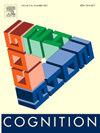学习什么是可检测的,检测什么是有用的:德语复数的习得作为一个分类问题
IF 2.8
1区 心理学
Q1 PSYCHOLOGY, EXPERIMENTAL
引用次数: 0
摘要
许多形态学计算模型没有预先假定输入数据的手工编码(即,不利用模型外部的语言知识),它们使用基于字符的形式表示来解释词汇处理和获取。虽然这些模型简单有效,但它们并非没有问题。从认知的角度来看,目前还不清楚根据这些模型,心理词汇中究竟代表了什么,以及说话者如何学习与传统语素不对应的语言形式的亚词汇单位(例如,英语- ceve -或德语-tor)。从计算的角度来看,这些模型是有问题的,因为它们识别形式单位的方法对分布信息的使用非常有限,并且忽略了任务特异性在语言处理中的作用。在本文中,我们提出了一种新的形态学计算模型,在效率和可靠性原则的指导下实现特定任务的线性处理。通过分析来自德语名义数系统的数据,我们表明我们的模型不仅优于最先进的模型,而且在心理语言学实验中对单词内部结构出现的预测与德语母语者的判断一致。本文章由计算机程序翻译,如有差异,请以英文原文为准。
Learn what is detectable, detect what is useful: acquisition of German plural as a classification problem
Many computational models of morphology that do not presuppose hand-coding of input data (i.e., do not draw on model-external linguistic knowledge) use character-based formal representations to account for lexical processing and acquisition. While such models are simple and efficient, they are not without problems. From a cognitive perspective, it remains unclear exactly what, according to these models, is represented in the mental lexicon and how speakers learn sublexical units of linguistic form that do not correspond to traditional morphemes (e.g., English -ceive- or German -tor). From a computational perspective, these models are problematic because their methods of identifying formal units make very limited use of distributional information and neglect the role of task-specificity in language processing. In this paper, we present a new computational model of morphology implementing task-specific linear processing guided by the principles of efficiency and reliability. By analysing data from the nominal number system in German, we show that our model not only outperforms state-of-the-art models but also makes predictions about the emergence of words' internal structure that are consistent with the judgments of German native speakers in a psycholinguistic experiment.
求助全文
通过发布文献求助,成功后即可免费获取论文全文。
去求助
来源期刊

Cognition
PSYCHOLOGY, EXPERIMENTAL-
CiteScore
6.40
自引率
5.90%
发文量
283
期刊介绍:
Cognition is an international journal that publishes theoretical and experimental papers on the study of the mind. It covers a wide variety of subjects concerning all the different aspects of cognition, ranging from biological and experimental studies to formal analysis. Contributions from the fields of psychology, neuroscience, linguistics, computer science, mathematics, ethology and philosophy are welcome in this journal provided that they have some bearing on the functioning of the mind. In addition, the journal serves as a forum for discussion of social and political aspects of cognitive science.
 求助内容:
求助内容: 应助结果提醒方式:
应助结果提醒方式:


